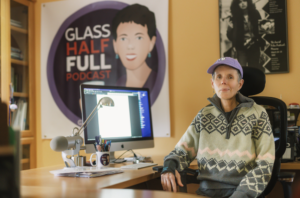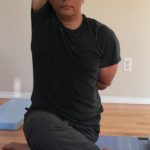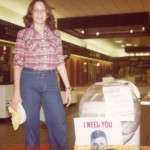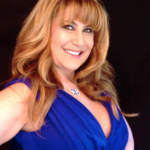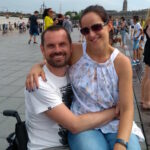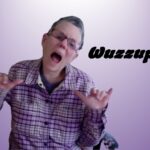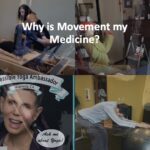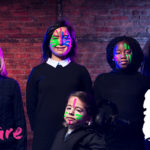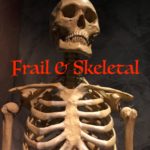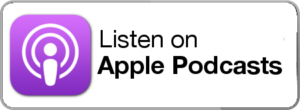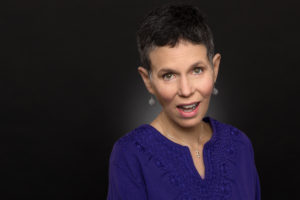February 28th is Rare Disease Day. This year’s theme is: Research. How can we support research efforts for our rare disease? We can donate to our patient advocacy organizations that
spearhead research efforts. And we, as rare disease patients, can participate in research studies and clinical trials.
This podcast episode features three individuals. Amy Lynn Ream and Dean Sage both participated in phase 1 clinical trials for a potential treatment for myotonic dystrophy. Hugo Trevino, who has spinal muscle atrophy (SMA), is in his third week of Spinraza infusions and already feeling positive effects.
Hugo recommends for all those with a rare disease, check out this link to see if you’re eligible to participate in any research studies.
If you care for someone with a neuromuscular disease — like myotonic dystrophy, SMA, or the 40+ other rare neuromuscular diseases — please donate to the Muscular Dystrophy Association.
Loose Transcription
Today’s podcast is all about Rare Diseases. In fact, this Wednesday, February 28th is the 11th annual international Rare Disease Day. The main objective of this day is to raise awareness for the general public and decision-makers about rare diseases and their impact on patients’ lives. This year’s theme is Research.
So how can we – people with rare diseases and those that care about us – have an impact on research? We can donate money to organizations spearheading research studies and clinical trials for our rare disease or we – as for lack of a better word, Patients – can participate in research.
Today I have three guests – each one has a rare disease. I do too, as a matter of fact. Though it’s often hard for me to remember that myotonic dystrophy, or DM, is rare since I know so many people with the disease…or disorder…or condition. I have both donated money and time to two patient advocacy organizations in my life and I’ve participated in a variety of research studies. The first two guests participated in phase 1 of a clinical trial during 2016. I was recruited for this drug trial but chose not to participate for a variety of reasons. I heartily applaud those that participated. Unfortunately, the drug did not move to the next level; as the pharmaceutical compared shared with the myotonic dystrophy community:
While the field gained considerable insights into the compound, clinical endpoints and future clinical trial design, DMPKRx did not achieve sufficient exposure in skeletal muscle to have the desired effect on RNA splicing.
The good news was that we were able to observe some changes in biomarkers such as RNA splicing and could detect low levels of the drug in muscle tissue. While we gained important learnings from this study, based on our experience we feel that these changes were not large enough to produce the level of clinical benefit we hope to achieve.
Both Amy and Dean were part of the clinical trial; I interviewed Amy before the study ended and Dean afterwards. Amy Lynn Ream, as you may remember, appeared in an earlier podcast episode where she shared her love of singing…operatic singing. She holds an annual recital to raise money for a nonprofit providing exercise and recreation opportunities for those with physical or developmental disabilities.
I met Amy soon after being diagnosed with myotonic dystrophy. Her parents were regular attendees at the support group I facilitated and I’ve shared a lot of good times with Amy and her family over the past 20 years.
I know you’ve participated in a clinical trial…what was your motivation, what did it mean for you to participate in these two studies?
I think I realized when I started singing – I love the word empowerment – if I’m not working anymore, I want to use my energy to fix the world. When we sat there 19 years ago, nothing was in the pipeline.
Here’s what it meant to me, I thought at first I was doing it for myself because it could halt the disease…I was doing it for the next generation. Here I am not scared of needles, medical procedures. I can do this. They took a lot of blood, a lot of skin. Look at the form. [she talks about brother dying during project] Maybe I’m fixing a little piece of the world. That’s what I’m all about, Amy likes to help.
I encourage people who have the same itch that I have to go out to ask questions if it’s something that’s important to you; you don’t have to donate tissue. Do it for your own reasons, don’t feel bad. It just fit into my goal. The people at Stanford are so good; you have 24-hour access. The pharmaceutical company paid for the car.
The best thing about the clinical trial are the people. They become your friends.
Next, you’re going to hear from Dean Sage – who also has myotonic dystrophy. Dean is an attorney in San Diego. I can’t remember when we met but it was at the annual patient conference put on by our patient advocacy organization. DM is such a family disease so naturally I’ve met Dean’s parents and his siblings – one who also has the disease and the other doesn’t. Dean’s a very interesting young man and in a future podcast you’ll get to see another aspect of his life…I’ll let it be a surprise for you now.
The Isis trial was cancelled I’m not aware of any restrictions. I didn’t recognize…I feel strongly that I was on the placebo. There were people that reported benefits. I think the reason I participated…I fought to get in the study. The reason I did it was desperation; if this is a possible treatment and cure. There was an element of altruism…trying to move that ball down. That was a distant second to wanting to eradicate the disease. It was more like 7 or 8 months. The pre-screen to meet the qualifications. Baseline studies. The strength test was quantitative. After the baseline, they did the first round of injections, stay overnight. They were drawing blood for every half hour to make sure that nothing was going wrong. There were weekly injections…the most emotionally draining was trying to get into the trial. The trial itself wasn’t very trying emotionally or physically. When I found out that I wouldn’t know if I was placebo or not placebo. My hope was that if it did work that after the trial you would have access to the drug on the open label extension. It was the silver lining. I didn’t spend a lot of time trying to figure out what I was on. I left it up to the researchers.
My last guest is Hugo Trevino. I met Hugo last year in Washington DC when I attended a conference organized by the Muscular Dystrophy Association, where Hugo works. He is also a graduate student studying international higher education. Hugo also has a rare disease – SMA, or Spinal Muscle Atrophy. SMA is also genetic and one of his 3 siblings also has the disease.
When you meet Hugo you’re immediately hit with his amazing radiating smile and positive energy. Although we didn’t get to talk much at the Washington conference I wanted to get to know him so we connected on Facebook. When I saw that Hugo recently started taking the new drug, Spinraza, I knew he had to be a part of this podcast episode.
So…the action items for today’s podcast — if you have a rare disease, check out the website Hugo mentioned to see if there are research or clinical studies you can participate in. if you care for someone with a rare disease, please consider donating to the appropriate patient advocacy organization to help further research efforts.
If you enjoy this podcast and the guests you heard from, you can always make a donation to the Muscular Dystrophy Association. The link is on the Glass Half Full website. Thanks again for listening!
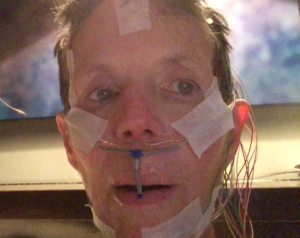





 The day began with a lovely drive on the back roads of Sonoma County. It was unintentional but the GPS fed us this circuitous yet gorgeous route. I saw parts of Sonoma I’ve never seen — so green and lush — it’s amazing how just a drive through more nature, less concrete, can ease your tension.
The day began with a lovely drive on the back roads of Sonoma County. It was unintentional but the GPS fed us this circuitous yet gorgeous route. I saw parts of Sonoma I’ve never seen — so green and lush — it’s amazing how just a drive through more nature, less concrete, can ease your tension.




 It’s all about support groups! Listen to several support group facilitators talk about their experiences attending and eventually facilitating a support group. Patient advocacy organizations represented include the Muscular Dystrophy Association, Multiple Sclerosis Foundation, and the FSH Society. Support groups organized through MeetUp cover chronic illness and life transitions.
It’s all about support groups! Listen to several support group facilitators talk about their experiences attending and eventually facilitating a support group. Patient advocacy organizations represented include the Muscular Dystrophy Association, Multiple Sclerosis Foundation, and the FSH Society. Support groups organized through MeetUp cover chronic illness and life transitions.